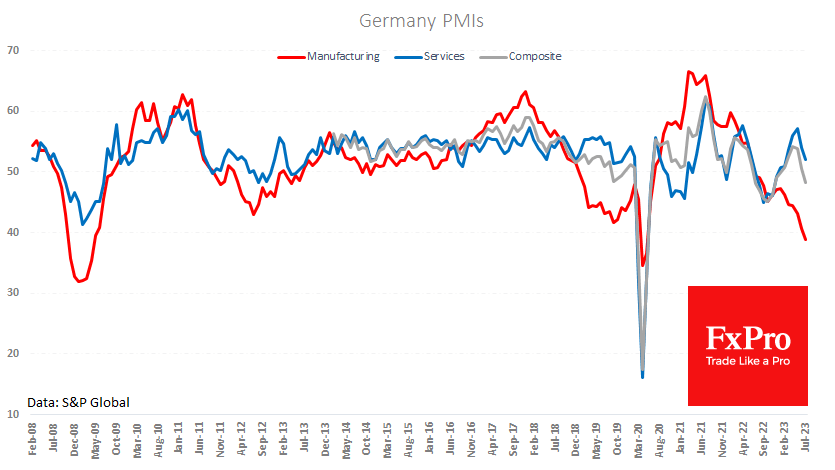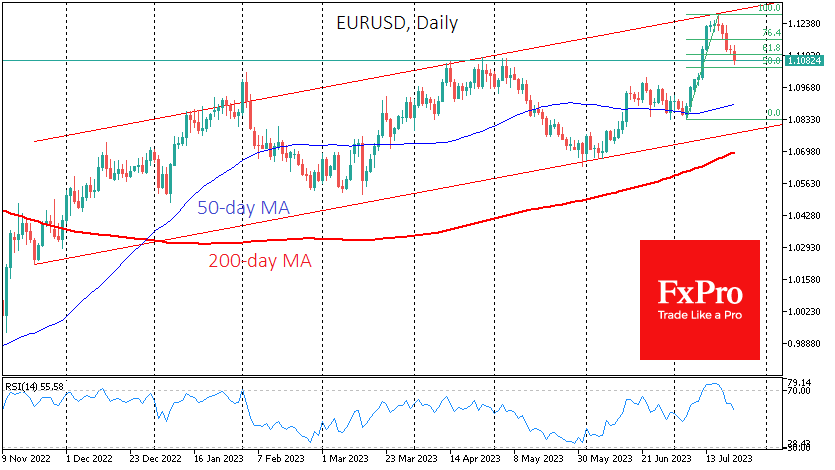Euro retreats inside uptrend on weak PMIs
July 24, 2023 @ 15:03 +03:00
The single currency fell against the Dollar on Monday, dropping to 1.1070 following the release of weak economic data. After losing for five consecutive sessions, the EURUSD has given back almost half of its gains from the 6th to the 18th, and the pair’s further momentum will largely depend on comments from the ECB and the Fed in the second half of the week.

Preliminary estimates of the July PMI business activity indices triggered a fresh wave of disappointment and selling in the single currency, as they were painfully weaker than expected. The composite index for France fell to 46.6 from 47.2 the previous month, against expectations for a rise to 47.8. The indicator points to the sharpest contraction in business activity since November 2020.
The situation is similar in Germany. There, the composite index fell from 50.6 to 48.3, marking a shift from expansion to contraction, while the average forecast pointed to a correction to 50.3 (weak growth).

In the euro area, the Manufacturing PMI fell to 42.7 from 43.4 the previous month and against expectations of 43.5. Excluding the coronavirus shock, the index was only lower between October 2008 and June 2009. But the central bank was cutting interest rates sharply at that time to support the economy and boost inflation. Nowadays, despite the alarming signals from the economy, the ECB continues to see the fight against inflation as its most important task.
Historical experience suggests that the current policies of the major central banks are justified in the long term but carry the risk of excessive pressure on the economy in the short term. The sell-off in the euro, which began immediately after the French data and intensified after the German data, suggests a reassessment of the outlook for monetary policy.
Speculators are probably rushing to bet that the ECB will be forced to soften its hawkish stance on further policy tightening, which is immediately bearish for the euro. However, investors and traders should remember that the ECB has been methodically tightening in recent months as the economic outlook for the region has weakened.

Technically, the euro’s decline is a retreat from the upper boundary of the ascending channel in which the pair has been trading since last November and a correction after accumulated overbought conditions on the daily timeframe. Potential targets for the bears are 1.0900, near the 50-day moving average, and 1.0850, the area of previous lows and the channel’s lower boundary. Only a break below this level will allow us to discuss a long-term uptrend change.
At the same time, it cannot be ruled out that the pair will stay above 1.1050, turning the local extremes of April and May into solid support.
The FxPro Analyst Team






